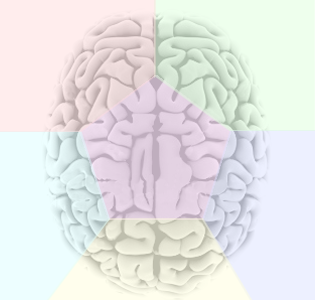SAMe the Miracle Molecule For Your Brain Liver and Joints
 What if there was a medication that could improve your mood and memory, protect your brain from aging and your liver from toxins, and also reduce the pain of arthritis while at the same time rebuild cartilage in your joints as you age? And there were NO harmful side effects from taking it? Wow wouldn’t that be a hot item! What pharmaceutical company wouldn’t want the rights to sell that on the late night news!!
What if there was a medication that could improve your mood and memory, protect your brain from aging and your liver from toxins, and also reduce the pain of arthritis while at the same time rebuild cartilage in your joints as you age? And there were NO harmful side effects from taking it? Wow wouldn’t that be a hot item! What pharmaceutical company wouldn’t want the rights to sell that on the late night news!!
Well there is such a substance, but it’s not a drug. Where does it come from? Actually our body makes it, but it is also now available in pill form. It’s called SAMe, short for S-adenosylmethionine. SAMe is made primarily in our liver, where it’s converted into the powerful antioxidant glutathione, which is more than 1000X more powerful in the fight against oxidative stress and free radicals than vitamin C. Actually most of the documented benefits of Vitamins C are due to it’s ability to support and regenerate glutathione, but it’s ability to do so is limited by the amount of SAMe you have in your body.
Generally a healthy body produces between 3 and 4 grams of SAMe per day. But older individuals, or those suffering from depression, arthritis, liver disease or Alzheimer’s typically produce much less. Dr. Thomas Shea, from the University of Mass, notes that “our body was not designed to survive on such low amounts of SAMe.”
You likely know that the liver is the primary detoxifier in your body. Whenever we take any drug, alcohol, poison or other potentially toxic substance into out body, it’s the liver, that has to deal with this. And it’s ability to do so is due primarily to the actions of SAMe and glutathione. But this protection extends also to the brain, where SAMe is a key neuroprotective compound, a co-factor for glutathione as well as SOD (superoxide dismutase), and a methyl doner. Together these various properties protect the organelle within our brain cells, including our energy producing mitochondria and their DNA, from the ravages of aging.
Additionally SAMe supports a host of chemical functions necessary for normal brain and other cellular activity. For example it has the amazing ability both to help the body produce multiple neurotransmitters, the chemical messengers that promote a positive mood, memory, motivation and movement, but it also helps the cells be more receptive to these messengers.
So how helpful can this be, really? Well a few years ago The National Institute of Mental Health decided to fund a double-blind, placebo-controlled trial that would evaluate SAMe as an additive therapy in those suffering major depression who were resistant to FDA-approved drugs.
Researchers at HarvardMedicalSchool and Massachusetts GeneralHospital gave patients 800 mg of SAMe, twice daily (which is a lot) along with a typical antidepressant drug – a selective serotonin reuptake inhibitor (SSRI).
Relative to placebo, patients who received the SAMe showed a 105% higher response rate and a 121% higher remission rate. Said differently, add-on therapy with SAMe in patients with drug-resistant depression produced double the response rate AND remission rate compared with placebo within a 6-week period, and with far fewer adverse side effects, even at high doses.
Interestingly, SAMe may be even more effective without the other drugs and their side effects (see below) – at a much lower cost. One study found that regardless of whether patients received SAMe or the drug, if they got better, the levels of SAMe in the blood rose significantly as their depressive symptoms improved. It appears SAMe is essential for a full recovery from depression.
Although the above noted Harvard study was published in the August 2010 issue of the American Journal of Psychiatry because it is a naturally occurring substance and no drug company can patent it, it’s value has not been well advertised. But it’s effects have certainly been well documented, both in Europe where it was discovered, and is sold as a medication, as well as in the US. To read my primary source article and check out their 32 references click here or go to: http://www.lef.org/magazine/mag2010/dec2010_New-Human-Study-Confirms-Potent-Antidepressant-Effects-of-SAMe_01.htm
(This would be a great article to share with colleagues and clients.)
SAMe Alone Is Just As Effective and Much Safer Than Meds
An Evidence Report Summary prepared by the prestigious Rand Corporation and sponsored by the U.S. Department of Health and Human Services’ Agency for Healthcare Research and Quality shows that SAMe is as effective as prescription drugs for depression, as well as osteoarthritis and some liver conditions. The report is the result of a three year effort of a team of sixteen medical professionals who reviewed 102 clinical trials of SAMe in order to determine its efficacy.
UCLA assistant professor Hyla Cass, MD, commented, “The Department of Health and Human Services hired an impeccable group of researchers to examine 102 clinical studies to determine whether or not SAM-e works . . . their results are quite compelling. These new findings suggest that SAM-e works as effectively as prescription drugs and it does it without the side effects. This is big news for patients who suffer side effects from prescription antidepressants such as headaches, weight gain and the most significant – sexual dysfunction.”
As noted SAMe like Cymbalta and other popular new drugs has multiple avenues of action. But unlike these, since this is what the body was designed to use, it does not produce the same side effects. Cymbalta, does help some individuals. But it is very addicting with nasty side effects such as itching, belly pain, potentially fatal liver damage, flu-like symptoms, problems concentrating, confusion, hallucinations, memory problems, muscle stiffness, seizures, weakness, blisters, rashes, hives, headaches, unusual bleeding or bruising, irregular heart beat, dizziness or fainting, thoughts of suicide – likely from one or more of the above symptoms and the inability to get off the stuff!!
It’s significant to note that many medications adversely affect the liver, and memory, while SAMe helps to protect and enhance these, plus giving as much relief from joint pain as common non-steroidal anti-inflammatory agents like aspirin and Advil. Owners of race horses are now giving it to their horses to enable them to stay strong and healthy and avoid joint pain and injuries.
May Help Those with Alzheimer’s or Parkinson’s
Experts have known for more than a decade that severely reduced brain levels of SAMe are directly linked to Alzheimer’s disease.1 More recent research reveals a direct correlation between levels of SAMe in the brain and Parkinson’s disease. Aging individuals stricken with Parkinson’s disease have been shown to be worse when SAMe levels are low, while cognitive function is markedly better when levels of SAMe are higher.2 At the core of SAMe’s ability to support brain function and neuronal health is its role in boosting levels of the very powerful endogenous antioxidant glutathione (GSH) and enhancing the antioxidant power of superoxide dismutase (SOD). Scientists have noted that these twin capabilities underscore SAMe’s importance as a neuroprotective compound, given the extraordinarily high metabolic activity and energy-intensive demands of brain cells and neurons.11
Moreover, Dr. Shea at UMass found in a study that preceded the one I was involved in, that SAMe was also effective in reducing both agitation, anger and aggression in both mice and men – including those with dementia.
These are some reasons why SAMe was included in Dr. Shea’s UMass formulation for Alzheimer’s (now called Perceptiv™) Moreover, his and other research shows that SAMe is most effective when taken in conjunction with related nutrients like it’s precursors folic acid and B-12, as well as NAC which provides the protein necessary to synthesize glutathione. This also is likely why people who take Perceptiv™ often report feeling better with in days. Like my friend Bob, who has been struggling with anxiety and dysphoria related to reduced or partial employment.
SAMe In Action — It’s Effects On Real People
After taking Perceptiv™ for only a few days he sent me the following:
“Dave… Here is a testimonial for you (I honestly can’t believe how much better I feel):
I am a 48-year-old male who has tried several different remedies in an effort to “feel better.” I am a regular gym attender and have, in the past, tried several vitamin and herbal supplements in effort to counteract the effects of a stressful, constantly on-the-go lifestyle. I have continually fought tiredness and the adverse effects of just not feeling quite right. There have, in fact, been many days where I would plug along feeling like I had just been shaken out of bed and immediately made to function. For the longest time I figured that was just normal for a person my age … until I discovered Perceptiv. After taking it for just a few days I began feeling its effects. And now, I can honestly say that I feel much better than I have in years!”
I have another client in her early 50’s who heard about my work with dementia prevention, and contacted me for assistance. Although she is well educated, previously very successful, and otherwise a very competent women she’s had some significant losses and family stressors, including a divorce and unemployment, and had been suffering from serious, medication resistant clinical depression for years. She had even gone through ECT treatments to no avail. And now suffered from significant memory challenges in addition to her depression and OCD. Her history suggested she might be low in SAMe. So I sent her a bottle of the Perceptiv formula. But it honestly didn’t do much for her, at least not in the first month – perhaps too little too late. So we added some magnesium threonate, 5-HTP and some other things. (She was already on a good healthy diet, using bright light therapy and exercising regularly.) But still there wasn’t much progress.
So I sent her some info on the above noted NIH study with SAMe. She decided she would like to try higher doses of SAMe. I found her a good inexpensive source (it can be a bit pricey in high doses). So she began, adding on the SAMe. Within two days she reported that 1200 mg daily had finally produce a “beneficial result.” And now that she feels and can think better she has been able to land a good job, and things seem to be looking up. She still has challenges, but at least her outlook is much brighter.
I am encouraged by this. I believe SAMe may make a significant difference for many people. I recall Dr. Shea once telling me, our bodies were not designed to survive on the low levels of SAMe many of us are left with, especially if we don’t eat a lot of vegetables.
How To Obtain It For Less SAMe used to be pricey, but the price has come down in recent years. I have a good source who obtains his directly from the company in Italy who first discovered how to synthesize bio-identical SAMe. He can provide a one month supply of 30 200 mg capsules to my clients for just $19. It’s available elsewhere, but the kind my friend sells in reported to be 4X more absorbable. Best if individuals purchase a bottle of 180 (200 mg ea) then my source can provide that to my clients/readers for just $72 or just $12 per 30 super absorbable crystalline caps. Or it’s available in the Perceptiv™ formula with the other helper nutrients noted for just $49 (only $42 ea if you buy multiple bottles through this website, or email me at DavidRJL@aol.com for more info.)
References
1. Papakostas GI, Mischoulon D, Shyu I, Alpert JE, Fava M. S-adenosyl methionine (SAMe) augmentation of serotonin reuptake inhibitors for antidepressant nonresponders with major depressive disorder: a double-blind, randomized clinical trial. Am J Psychiatry. 2010 Aug;167(8):942-8.
2. Alpert JE, Papakostas G, Mischoulon D, et al. S-adenosyl-L-methionine (SAMe) as an adjunct for resistant major depressive disorder: an open trial following partial or nonresponse to selective serotonin reuptake inhibitors or venlafaxine. J Clin Psychopharmacol. 2004 Dec;24(6):661-4.
3. Fava M. Switching treatments for complicated depression. J Clin Psychiatry. 2010 Feb;71(2):e04.
4. Berlanga C, Ortega-Soto HA, Ontiveros M, Senties H. Efficacy of S-adenosyl-L-methionine in speeding the onset of action of imipramine. Psychiatry Res. 1992 Dec;44(3):257-62.
5. Rosenbaum JF, Fava M, Falk WE, et al. The antidepressant potential of oral S-adenosyl-l-methionine. Acta Psychiatr Scand. 1990 May;81(5):432-6.
6. Salmaggi P, Bressa GM, Nicchia G, Coniglio M, La Greca P, Le Grazie C. Double-blind, placebo-controlled study of S-adenosyl-L-methionine in depressed postmenopausal women. Psychother Psychosom. 1993;59(1):34-40.
7. Fava M, Giannelli A, Rapisarda V, Patralia A, Guaraldi GP. Rapidity of onset of the antidepressant effect of parenteral S-adenosyl-L-methionine. Psychiatry Res. 1995 Apr 28;56(3):295-7.
8. Bell KM, Potkin SG, Carreon D, Plon L. S-adenosylmethionine blood levels in major depression: changes with drug treatment. Acta Neurol Scand Suppl. 1994;154:15-8.
9. Delle Chiaie R, Pancheri P, Scapicchio P. Efficacy and tolerability of oral and intramuscular S-adenosyl-L-methionine 1,4-butanedisulfonate (SAMe) in the treatment of major depression: comparison with imipramine in 2 multicenter studies. Am J Clin Nutr. 2002 Nov;76(5):1172S-6S.
10. Pancheri P, Scapicchio P, Chiaie RD. A double-blind, randomized parallel-group, efficacy and safety study of intramuscular S-adenosyl-L-methionine 1,4-butanedisulphonate (SAMe) versus imipramine in patients with major depressive disorder. Int J Neuropsychopharmacol. 2002 Dec;5(4):287-94.
11. Cavallaro RA, Fuso A, Nicolia V, Scarpa S. S-adenosylmethionine prevents oxidative stress and modulates glutathione metabolism in TgCRND8 mice fed a B-vitamin deficient diet. J Alzheimers Dis. 2010;20(4):997-1002.
Prevention Strategies 








- FREE SPECIAL REPORT AND UPDATES
For free monthly updates on the latest practical research related to brain health and memory improvement, and a free 23 page report on How to Prevent or Arrest Alzheimer's, Click here. Recent Comments
Archives
- July 2019
- November 2018
- September 2018
- July 2018
- June 2018
- April 2018
- February 2018
- January 2018
- December 2017
- October 2017
- September 2017
- August 2017
- June 2017
- May 2017
- March 2017
- January 2017
- December 2016
- October 2016
- September 2016
- August 2016
- June 2016
- May 2016
- April 2016
- March 2016
- February 2016
- January 2016
- December 2015
- November 2015
- August 2015
- July 2015
- June 2015
- May 2015
- April 2015
- March 2015
- February 2015
- January 2015
- November 2014
- October 2014
- September 2014
- August 2014
- July 2014
- June 2014
- April 2014
- March 2014
- February 2014
- January 2014
- December 2013
- November 2013
- October 2013
- September 2013
- August 2013
- July 2013
- June 2013
- June 2012
- February 2012
- January 2012





